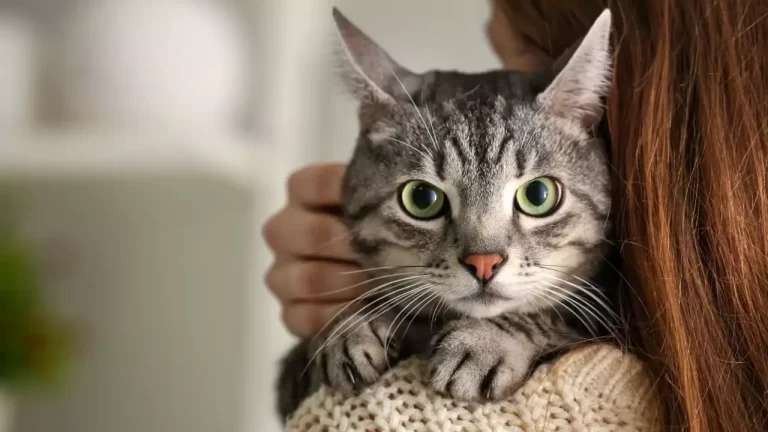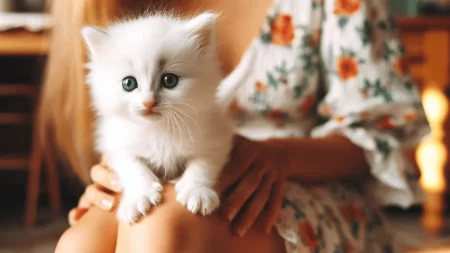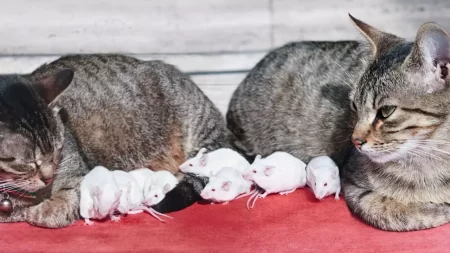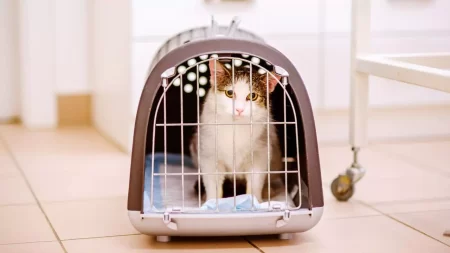No. Cats do not have the same brain structure as humans, and they do not have the ability to process language in the same way.
However, cats do think, and they have a complex system of communication that they use to interact with each other and with humans.
How Do Cats Communicate?
Cats communicate in a variety of ways, including:
- Body language: Cats use their body language to communicate a wide range of emotions and intentions. For example, a cat may puff up its fur and arch its back to signal aggression, or it may rub against you to show affection.
- Sounds: Cats make a variety of sounds to communicate, including meows, purrs, hisses, and growls. Different sounds can have different meanings, depending on the context. For example, a soft meow may be used to get your attention, while a loud meow may be used to express distress.
- Facial expressions: Cats also use their facial expressions to communicate. For example, a relaxed cat may have its eyes half-closed and its ears perked up, while a stressed cat may have its eyes widened and its ears flattened back.
Do Cats Think in Language?
Cats do not have the same brain structure as humans, and they do not have the ability to process language in the same way. Humans have a specific area of the brain called Broca’s area that is responsible for language production. Cats do not have this area of the brain.
Additionally, cats do not have the same vocal tract as humans, which makes it difficult for them to produce human speech.
The limitations of a cat’s brain for language
In addition to the lack of Broca’s area, there are other limitations of a cat’s brain that make it difficult for them to develop language. For example, cats have a much smaller hippocampus than humans. The hippocampus is a part of the brain that is responsible for memory and learning. This smaller hippocampus makes it more difficult for cats to learn and remember complex concepts, such as the meaning of words.
The concept of thinking without language
While cats do not think in language, they are still capable of complex thought. Cats have a good memory, and they are able to learn and solve problems. They are also able to form social bonds with other cats and with humans.
Cats may think in images, smells, and sounds. They may also think in terms of their physical experiences, such as the feeling of hunger or the sensation of being petted.
What Do Cats Think About?
Cats think about a variety of things, including:
- Basic instincts and survival: Cats are predators, and they are constantly thinking about how to find food and avoid danger.
- Daily routine and habits: Cats are creatures of habit, and they think about the things they need to do each day, such as eating, sleeping, and grooming.
- Interactions with humans and other animals: Cats think about their relationships with the other animals in their lives, including their humans. They may think about how to get their humans’ attention or how to avoid a fight with another cat.
Understanding Your Cat’s Behavior
By paying attention to your cat’s body language, sounds, and facial expressions, you can learn to understand what it is thinking and feeling. This can help you to communicate more effectively with your cat and to provide it with the best possible care.
Here are a few tips for recognizing signs of contentment, stress, and curiosity in your cat:
- Contentment: A contented cat will have its eyes half-closed, its ears perked up, and its tail relaxed. It may also purr and rub against you.
- Stress: A stressed cat may have its eyes widened, its ears flattened back, and its tail tucked between its legs. It may also hiss or growl.
- Curiosity: A curious cat will have its ears perked up and its tail raised in the air. It may also sniff around and explore its surroundings.
Effective communication with your cat
To communicate effectively with your cat, it is important to use its own language. This means paying attention to your body language, tone of voice, and facial expressions.
For example, if you want to get your cat’s attention, you can crouch down to its level and speak in a soft, gentle voice. You can also try blinking slowly, which is a sign of friendship in cat







